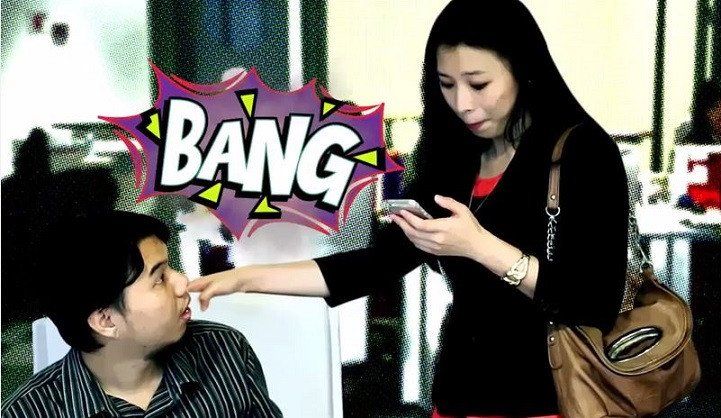Jazzing Up Leadership

Rising up to the challenge
Author Frank J. Barrett sees jazz bands as organisations designed for innovation.
Drawing upon his experience in both management and jazz, he uses jazz improvisation to outline principles to nurture strategic improvisation and innovation in organisations. His book, Yes to the Mess, is about how leaders can understand and facilitate the innovation process.
Related post: 10 Influencing Factors To Creating A Climate For Innovation
All that jazz
Today’s fast-paced environment almost guarantees that the best-laid plans will be derailed. In such turbulence, Barrett is attracted to the organisational model developed by Karl Weick.
Weick argues that organisations are made up of diverse interdependent specialists who make quick, irreversible decisions under pressure, and who innovate without knowing where they will end up. Improvisation is key, and Barrett believes that the best model for businesses today lies in jazz.
Barrett first realised how closely connected his two pursuits of management and jazz were when a student interrupted his management class with a seemingly irrelevant question, out of curiousity. Wanting to encourage it, Barrett discussed the question for the entire lesson, then realised that he had covered the original topic in more depth than ever before.
He began to seek such unexpected elements in all his classes, and great teaching opportunities abounded. He then realised that in business, just as in jazz, the great moments are always those which happen along the way – if we let them.
And just like jazz, organisations need a model of “diverse interdependent specialists” who jump in before they have a well-thought out plan.
This might interest you: Do You Seek Risks?
The improv paradox
There is a myth that jazz players are untrained musicians who pluck notes out of thin air. In fact, jazz is extremely complex. Jazz players require a persistent pursuit of learning and a disciplined imagination in order to improvise.
Jazz players first learn to improvise by repeating and mimicking other players. Each player builds a repertoire of phrases and patterns through imitation and memorisation.
After years of such imitation, musicians recognise which patterns fit within different forms and are able to identify the various options available. They then combine, extend, vary and shift the contours of various phrases to produce a new phrase.
The same is true of organisational leaders. Great leaders are distinguished by their ability to strategise possibilities as well as adapt and adjust in the midst of action.
Both jazz soloists and organisational leaders also face the same paradox: over-reliance on learned patterns can limit the risk-taking necessary for creative growth. Both need to relinquish some degree of control to “go with the flow”.
In other words, Barrett says,
“Act first “as if” this will work; pay attention to what shows up; venture forth; make sense later.”
On the way to yes – abandoning routines
The saxophonist Sonny Rollins has been considered the greatest living improviser. Rollins is almost as famous for his mistakes as for his “successful” innovations. In the 1950s, he was well-known and successful, playing and recording with great musicians.
However, in 1959, Rollins mysteriously quit playing. This is because he had to break the habit of playing the same phrases solo after solo. For three years, Rollins played alone under the Williamsburg Bridge near his home, stopping himself whenever he heard himself play a familiar routine.
He then recorded an album titled, The Bridge. Though initially rejected by critics due to the dramatic departure from his usual style, the album is now considered one of the 10 most important jazz recordings ever made.
Rollins’ efforts to break his familiar routine was an affirmative move. He let go of the familiar in order to welcome new possibilities.
Intel’s Andy Grove did the same. Grove and Intel co-founder Gordon Moore decided to move out of the DRAM technology industry (Intel’s core business at the time) into the microprocessor industry, which was an uncharted territory then. This move was hugely profitable, and was only made possible because he and Moore let go of the routines.
Here’s something else about Grove’s management style: Why Bad Listening Is One Of The Worst Decisions Managers Can Make
Yes to the mess!
A manager’s first instinct is to diligently avoid messes, eliminating them when possible and cleaning up thoroughly when they happen.
Jazz musicians say “yes” to the mess by learning through action, rejecting routine behaviour and safe predictability in favour of experimentation and progress. Both parties need to constantly challenge routines and experiment, as this is the only way to move forward.
Herman Miller, a Michigan-based furniture manufacturer, has been committed to sustainability since the 1990s. Consistent with this principle, they hired William McDonough to design a “green” manufacturing plant, complete with an innovative “green” roof of soil, vegetables and flowers.
Large colonies of aggressive wasps began to inhabit the roof, and company executives faced a dilemma. The conventional method to eliminate the wasps was through pesticides, which went against the company’s values.
Instead, Herman Miller decided to import 600,000 bees in 12 hives and establish them on the roof. The wasps eventually left, and Herman Miller was left with hives of honey, which they bottled and gave to visitors as a goodwill gesture.
By experimenting with the bees, the company showed an unrelenting, affirmative mindset such as that adopted by jazz musicians. They are confident that amidst the chaos, they will be able to find a positive and creative pathway out.
Jazz as continual negotiation: Saying yes to the groove
Jazz players constantly engage with one another, interpreting and anticipating the melodies of others’ music while shaping their own creations. They are continually constrained and facilitated by each other’s musical ideas.
This is important as jazz bands seek a balance between order and disorder, a “built-in instability”. Players need to rely on each other, amending direction in response to disorientation and miscalculations.
The goal of every jazz performance is to achieve a groove, where players are mutually orientated to the beat and have a common sense of beat and meter.
Once this groove is achieved, musicians experience the activity as if it is coming from outside the group, rather than themselves. Moreover, they begin performing beyond their capabilities. To achieve a groove, organisations need to create corporate cultures where their team can engage with each other, allowing a discernible pattern to emerge without the presence of a single controller.
Read this: Lose The Yes Men
Leading by saying yes to the best of what exists
In 1501, Michaelangelo was commissioned to create a statue of David for a Florence cathedral. His famous David was carved from a piece of marble previously discarded by Agostino di Duccio.
In his words, Michaelangelo simply needed to “clear the rest of the marble away in order to bring David out”. His success lay in his capacity to envision a successful outcome – an approach to learning that points towards bold innovation.
We often choose to avoid loss rather than acquire gain, especially during stressful times. While this is understandable, such mindset halts the discovery process, prevents learning, and can cause one to overlook opportunities.
Jazz improvisers work towards discovery in times of stress. They avoid old habits even if such habits seem like the quickest way to resolve problems, understand the value of intelligent risk-taking and leap in.
Koh Earn Soo and his team take the best books and summarise them into shorter, readable content in the hope of inspiring people to read more and learn more. To read the rest of this summary and summaries of other bestsellers, subscribe to www.thebestbooksummary.com. You can contact him at editor@leaderonomics.com. For more Learning From Books articles, click here.
Leadership




